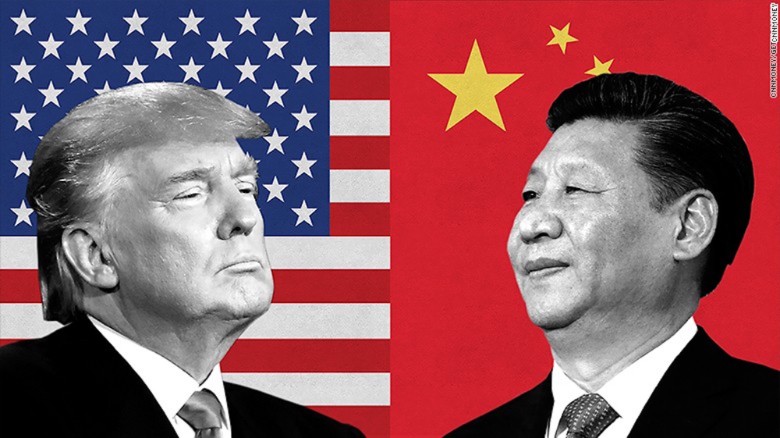China Warns US to Stop Threats as Trade War Escalates with Tariffs Reaching 245 Percent
Tensions between the United States and China escalated sharply this week as Beijing firmly responded to President Donald Trump’s latest wave of aggressive trade measures. The Chinese government issued a stern warning to Washington, urging the United States to “stop threatening and blackmailing” amid ongoing trade disputes that have rattled global markets. This statement came after President Trump reinforced his administration’s hardline stance, stating that the responsibility to de-escalate the trade war lies squarely with Beijing.
The current situation is a continuation of a long-running economic conflict, but the stakes have now reached new heights. Trump’s administration has slapped a fresh round of tariffs on a wide array of Chinese imports, with some levies reaching an astonishing 245 percent. These new duties represent a dramatic increase from the original 20 percent tariffs that were imposed earlier over concerns surrounding China’s alleged role in the fentanyl supply chain and what Washington considers unfair trade practices. China has responded with reciprocal tariffs, some reaching 125 percent on American goods.
China’s Foreign Ministry spokesman Lin Jian criticized Washington’s approach, emphasizing that no side benefits from a trade war. He stressed that China remains open to dialogue but demanded that any negotiations be based on equality, respect, and mutual benefit. “If the US really wants to resolve the issue through dialogue and negotiation, it should stop exerting extreme pressure, stop threatening and blackmailing,” Lin said. He reiterated China’s longstanding position that while it does not want a trade war, it is fully prepared to defend its interests.
Meanwhile, China’s Commerce Ministry expressed dismay at the increasing number of tariffs, calling them irrational and accusing the United States of weaponizing tariffs to an extreme level. The ministry stated that some Chinese exports to the US now face a cumulative tariff burden of 245 percent under various classifications, signaling deepening economic friction. Despite the tensions, the Chinese economy showed resilience, reporting a stronger-than-expected GDP growth of 5.4 percent in the first quarter. Analysts noted this uptick was likely fueled by Chinese exporters rushing to fulfill shipments ahead of the US tariff hikes.
President Trump’s latest moves include a baseline 10 percent global tariff as well as targeted levies of up to 125 percent on Chinese goods, although certain technology products like smartphones and laptops have been temporarily exempted. The White House stated that the path to resolving the standoff lies with China, claiming that “the ball is in China’s court.” Press Secretary Karoline Leavitt emphasized, “China needs to make a deal with us. We don’t have to make a deal with them.”
Other global players are also adjusting their strategies amid the uncertainty. Japanese automaker Honda announced plans to move production of its hybrid Civic model from Japan to the United States, citing its long-standing principle of manufacturing products where demand is highest. Japan’s envoy for trade talks expressed optimism ahead of a key meeting with US Treasury Secretary Scott Bessent, while also underlining Japan’s commitment to safeguarding its national interests.
South Korea is closely monitoring the situation, with Finance Minister Choi Sang-mok set to hold talks with Bessent next week. He emphasized the need for negotiations aimed at delaying reciprocal tariffs and reducing uncertainty for Korean businesses, especially those in the semiconductor and automotive sectors.
The broader impact of these trade policies is already being felt across global markets. Asian chip stocks took a significant hit after Nvidia warned of a potential $5.5 billion loss due to new US licensing restrictions affecting key semiconductor exports to China. In a further development, President Trump has ordered a new investigation that could lead to tariffs on critical minerals, rare-earth metals, and related products, including smartphones.
As the world watches closely, the escalating trade war between the two largest economies continues to create ripples that extend far beyond their borders, affecting international trade flows, investment strategies, and economic growth forecasts.
For video news visit our YouTube channel THE OLIGO.

